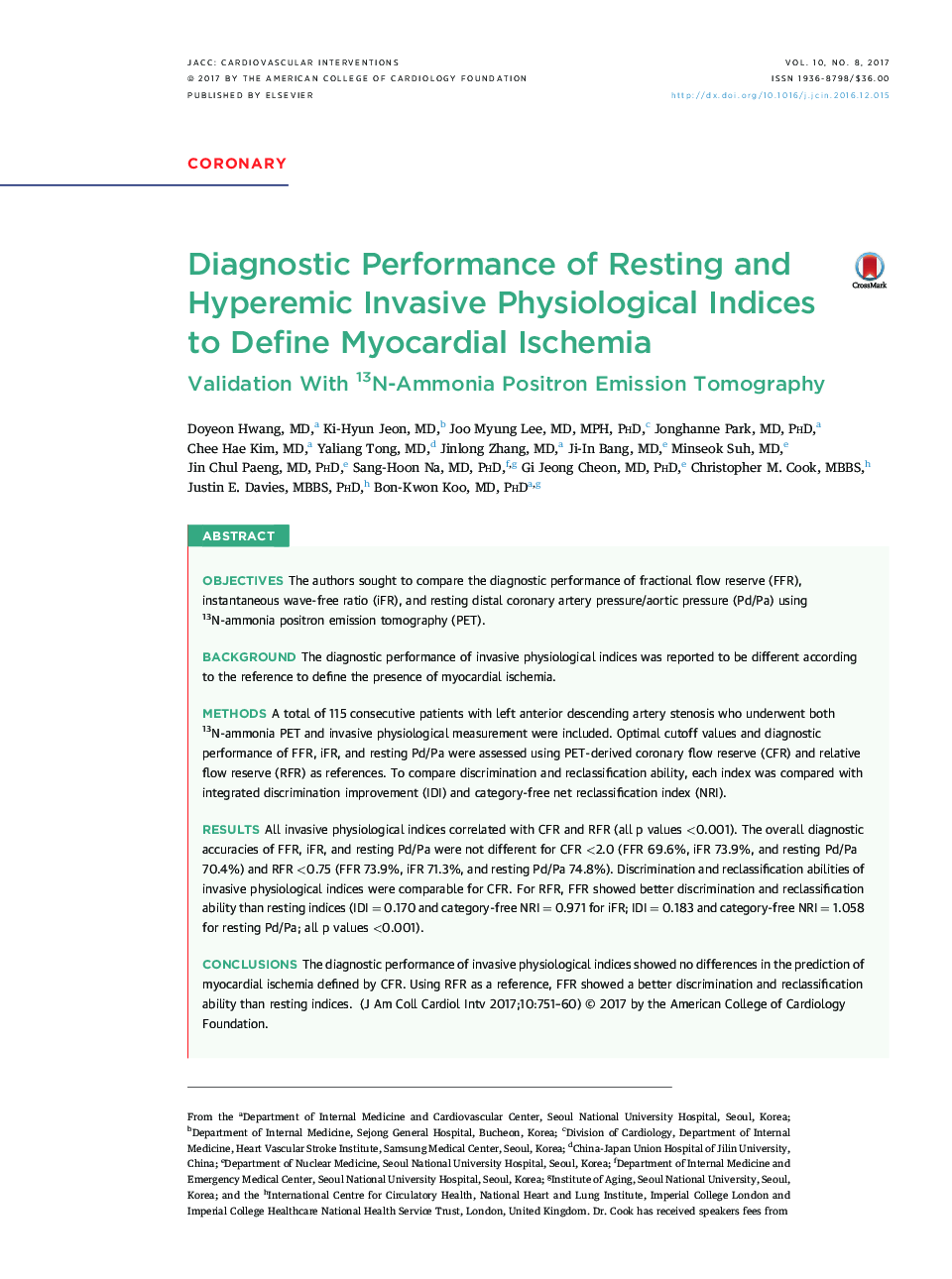| کد مقاله | کد نشریه | سال انتشار | مقاله انگلیسی | نسخه تمام متن |
|---|---|---|---|---|
| 5606345 | 1405500 | 2017 | 10 صفحه PDF | دانلود رایگان |

ObjectivesThe authors sought to compare the diagnostic performance of fractional flow reserve (FFR), instantaneous wave-free ratio (iFR), and resting distal coronary artery pressure/aortic pressure (Pd/Pa) using 13N-ammonia positron emission tomography (PET).BackgroundThe diagnostic performance of invasive physiological indices was reported to be different according to the reference to define the presence of myocardial ischemia.MethodsA total of 115 consecutive patients with left anterior descending artery stenosis who underwent both 13N-ammonia PET and invasive physiological measurement were included. Optimal cutoff values and diagnostic performance of FFR, iFR, and resting Pd/Pa were assessed using PET-derived coronary flow reserve (CFR) and relative flow reserve (RFR) as references. To compare discrimination and reclassification ability, each index was compared with integrated discrimination improvement (IDI) and category-free net reclassification index (NRI).ResultsAll invasive physiological indices correlated with CFR and RFR (all p values <0.001). The overall diagnostic accuracies of FFR, iFR, and resting Pd/Pa were not different for CFR <2.0 (FFR 69.6%, iFR 73.9%, and resting Pd/Pa 70.4%) and RFR <0.75 (FFR 73.9%, iFR 71.3%, and resting Pd/Pa 74.8%). Discrimination and reclassification abilities of invasive physiological indices were comparable for CFR. For RFR, FFR showed better discrimination and reclassification ability than resting indices (IDI = 0.170 and category-free NRI = 0.971 for iFR; IDI = 0.183 and category-free NRI = 1.058 for resting Pd/Pa; all p values <0.001).ConclusionsThe diagnostic performance of invasive physiological indices showed no differences in the prediction of myocardial ischemia defined by CFR. Using RFR as a reference, FFR showed a better discrimination and reclassification ability than resting indices.
92
Journal: JACC: Cardiovascular Interventions - Volume 10, Issue 8, 24 April 2017, Pages 751-760